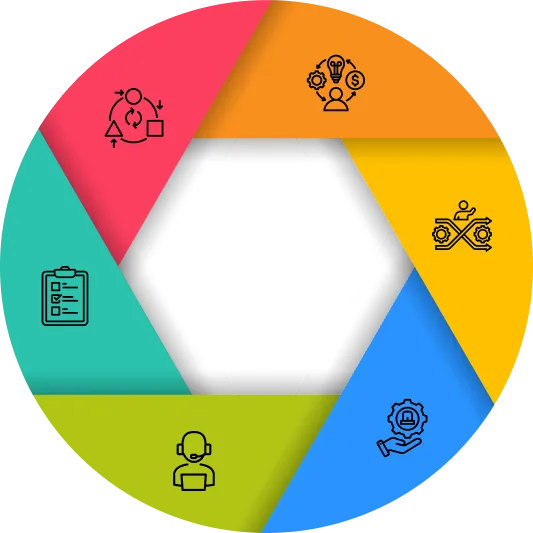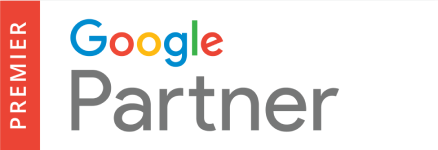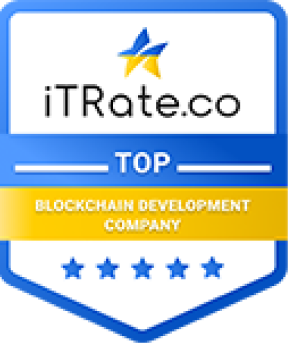
Software Maintenance And Support Services
Maintenance encompasses corrective, adaptive, perfective and preventive actions for software evolution. Corrective maintenance resolves defects, ensuring smooth operation. Adaptive maintenance modifies software to suit changing environments or platforms ensuring ongoing relevance and effectiveness.
Overview of Software Maintenance
Software maintenance is the process of managing updating and improving existing software to ensure it continues to meet the evolving needs and standards. It is a crucial phase in the software development lifecycle that occurring after the initial development and deployment. Effective collaboration among developers and stakeholders is essential for successful software maintenance projects. Software maintenance often accounts for a significant portion of the total cost of ownership for a software system.
The Uses of Software Maintenance
Software maintenance is crucial for identifying and fixing bugs and defects in the software. This ensures that the software operates without errors and provides a smooth user experience. Maintenance is used to add new features or improve existing ones. This helps the software to remain competitive and relevant in the market. It involves optimizing the software for better performance that which is essential for resource of intensive applications and large scale systems.Maintenance always includes updating and improving software documentation by making it easier for developers and users to understand and work with the software.
Why Choose Our Software Maintenance?
Our team includes experienced professionals with a deep understanding of software systems. We have the expertise to handle a wide range of software maintenance tasks effectively. We take a proactive approach to software maintenance.We not only address existing issues but also work to prevent future problems. Our software maintenance services are cost effective. We help you to avoid the unexpected and expensive system failures by maintaining your software proactively for ultimately saving you money in the long run.
Proactive Preventive Strategies
Preventive maintenance is a proactive strategy aimed at anticipating and mitigating potential risks before they escalate. Our team conducts thorough risk assessments, identifying vulnerabilities and weak points in your software. By addressing these proactively, we reduce the likelihood of disruptions, ensuring the long-term stability and reliability of your digital assets.The goal of preventive strategies is to enhance the overall robustness of your software.
Transparent Pricing Structure
We believe in transparency and affordability. Our software maintenance services start at a competitive US $3000. This clear pricing structure ensures that our top-notch maintenance solutions are accessible to businesses of varying scales, fostering a partnership that prioritizes value and excellence.Also understand the importance of budget constraints, especially for businesses of different sizes.
Tailored Solutions for Diverse Needs
Tanθ takes a customized approach, tailoring solutions to address the unique needs of your software. Whether your digital assets require specific updates, optimizations or targeted improvements. our team crafts a personalized strategy to ensure that your software remains efficient and effective.We recognize that different software applications have diverse requirements.
Skilled and Responsive Team
Our skilled and responsive team is the backbone of our maintenance services. Comprising experts in various facts of software development, our team is equipped to address your unique challenges. We align our expertise with your specific needs ensuring that our maintenance solutions are not only effective but also tailored to your software's intricacies.Time is of the essence in software maintenance, so our responsive team ensures timely support, minimizing downtime for your software.
Continuous Software Evolution
Software is a dynamic entity and its evolution is crucial for sustained relevance. Our maintenance services facilitate continuous software evolution, ensuring that your digital assets stay ahead of technological advancements. By staying current, your software remains competitive, adaptive and capable of meeting the changing needs of users.To support continuous evolution, we integrate the latest technologies into your software.
Standout Features of Software Maintenance

Enhanced Reliability
Reliability is essential for providing users with a consistent and error free experience that which is crucial for user satisfaction and trust. Reliable software experiences in minimal downtime due to issues that leading to higher availability for users and business operations. Reliable software means accurate results, less rework and high quality. Maintenance safeguards data accuracy and reliability which preventing errors that could compromise data integrity.

Performance Optimization
Performance optimization focuses on making software more efficient, reducing resource usage and improving overall system responsiveness. It ensures that system resources such as CPU, memory and storage are used more effectively by reducing the strain on hardware components. Optimized software consumes lesser resources for leading to lower operational costs that particularly in terms of hardware, electricity and maintenance.

Data Integrity
Extensive documentation and knowledge preservation are a part of maintenance for safeguarding the integrity of data and ensuring that the data can be managed effectively by future users and maintainers. Regular maintenance may include data auditing processes to track changes to data that providing transparency and accountability for data modifications. Maintenance excludes the data redundancy for better integrity.

Risk Reduction
Regular maintenance includes security updates and susceptibility assessments for reducing the risk of security violation and data theft. Proactive maintenance minimizes unplanned downtime that which can lead to significant financial losses and damage to the organization's reputation. Well maintained software leads to higher user satisfaction and user perception for reducing the risk of users that looking for alternative solutions.
Software Maintenance Benefits
Software maintenance offers several significant benefits that contribute to the overall success of software systems. Software maintenance guarantees smooth and reliable software operation by resolving bugs and errors for resulting in a complete and error free user experience.
Adaptation to Change
Maintenance allows software to adapt to new hardware, operating systems and technologies for ensuring continued functionality. It enables the incorporation of new features and adjustments to align with changing user needs and preferences. Adaptable software meets user expectations for leading to increased user satisfaction and loyalty. Adapting the software to change can improve efficiency by potentially reducing operational costs.
Test
Innovative updates attract and retain users as they appreciate the software that evolves to meet their changing needs and expectations. Innovation keeps the software up to date with industry trends and new tech by making sure it follows the latest and best practices. A reputation for innovation can positively impact the brand for leading to increased trust and recognition in the market. Users frequently suggest innovative ideas.
User Support
User support addresses user reported issues quickly for ensuring a smooth and hassle free experience. User support serves as a valuable channel for collecting user feedback which can be used to improve the software. Users can request new features or improvements through user support by contributing to software development roadmaps. Through support, users gain the knowledge and confidence to use the software effectively by unlocking its full potential.

Diverse Skills
The diverse skills were bring together individuals with different areas of expertise such as programming languages, databases and security for enabling the team to tackle a wide range of maintenance tasks effectively. With various skill sets the team is better equipped to adapt to changing technologies and emerging challenges for ensuring the software remains up to date and secure.
Change Management
Change Management in software maintenance is the organized process of planning, testing and making software changes to minimize disruptions and risks.Various types of changes that including bug fixes, updates, feature improvements and infrastructure changes. It can also involve updates to software configurations, data migrations and security patches.
Emergency Response
This group is focused on quickly resolving the software related emergencies. These emergencies can include system crashes, data loss, security breaches or other critical issues that disrupt normal operations. The goal of the emergency response group is to ensure the continuity of critical business operations. This includes restoring services and data as quickly as possible to minimize financial and reputational damage.
How Our Software Maintenance Services Work
Documentation Updates
The maintenance process begins with an assessment of the existing documentation for the software. This includes user manuals, technical guides and any other relevant documentation. During the assessment, any gaps or inconsistency in the documentation are identified. This may include missing information, outdated content or inaccuracies. The documentation updates are prioritized based on factors such as criticality, user feedback and changes in the software itself.
Cost Analysis and Budgeting
An estimation of the costs associated with each maintenance task is performed. This includes labor costs, software tools and resources or any external services that might be required. A budget is developed for outlining the financial resources that needed to carry out the maintenance activities effectively. This budget includes both short term and long term considerations. A cost benefit analysis is conducted to evaluate the potential return on investment (ROI) for each maintenance task. This analysis helps in making informed decisions for regarding resource allocation.
Bug Identification and Resolution
Our developers and quality assurance experts investigate the reported issues to understand the root causes and identify the scope of the problem. Once the issue is completely analyzed then our development team works on fixing the bug by making necessary code changes, updates or patches. After implementing bug fixes, rigorous testing is conducted to ensure that the issue has been resolved without introducing new problems or side effects.
Continuous Monitoring and Reporting
Continuous monitoring uses tools and systems to observe the software's operations in real-time by collecting data on its performance, user interactions and potential issues. Metrics such as response times, system resource usage and error rates are continuously collected to gauge the software's performance. Ongoing security checks and susceptibility scans are conducted to detect and reduce potential threats and violation.
Comprehensive Software Maintenance Services

Upgrades fastly
Updates are periodic modifications to the software that are released to address specific issues or to add minor improvements. These updates are usually aimed at fixing bugs, improving security and ensuring the software remains compatible with external changes. Updates are typically denoted by incremental version numbers (e.g., from version 1.0 to 1.1). Upgrades are more significant changes to the software that involve adding new features by improving the user interface or making substantial changes to the system.

Legacy Software Support
Legacy software refers to older software applications that are still in use but might no longer be actively developed or supported by their original creators. Legacy software support involves a range of activities to ensure that these older systems continue to work smoothly. Legacy software can become increasingly difficult and expensive to maintain over time as the technology it depends on becomes outdated and unsupported. Finding skilled professionals who are knowledgeable about older technologies and platforms can be challenging.

Dependency Management
Over time, the dependencies that a software application depends on may change, get updated or become dismissed. Effective dependency management ensures that these changes do not disrupt the functioning of the application. It involves monitoring and updating dependencies to ensure the application remains stable. Maintaining a clear record of all dependencies and their versions is essential for effective software maintenance.

Environmental Maintenance
The environmental maintenance can also refer to efforts to minimize the environmental impact of technology operations. This might involve reducing energy consumption, optimizing resource utilization and minimizing electronic waste. Ensuring that the environmental security measures are maintained to protect the software and data from unauthorized access and compliance with relevant regulations.
A Snapshot of Our Success (Stats)

Total Experience
0Years

Investment Raised for Startups
0Million USD

Projects Completed
0

Tech Experts on Board
0

Global Presence
0Countries

Client Retention
0
Scope of the Software Maintenance






Versioning and Source Code Management
Version Control Systems (VCS)
A Version Control System (VCS) is also known as a Source Code Management (SCM) system which is a software tool that enables developers to track and manage changes to a codebase over time. VCS assigns a unique identifier (often a commit or revision number) to each version of the code. This makes it easy to reference and revert to specific states. Multiple developers can work on the same codebase simultaneously without conflicts as the VCS allows for code synchronization and merging. Distributed VCS (DVCS) like Git, it stores a complete copy of the code repository on each developer's machine.
Conflicts
Conflicts in software maintenance refer to situations where there are inconsistencies or clashes between different versions of the software code or data. These conflicts often arise when multiple developers make changes to the same codebase or data concurrently.It can be caused by simultaneous edits, additions, deletions or modifications to the same lines of code or data records by different team members. Version control systems (like Git) and database management systems can automatically spot conflicting changes for helping to avoid issues.
Remote Repositories
Remote repositories are centralized code storage locations hosted on remote servers to often on cloud based platforms like GitHub, GitLab, Bitbucket or self hosted servers. They serve as a collaborative hub for software development teams. Developers PULL code from the remote repository to their local environments to work on it. Once they make changes then they PUSH these changes back to the remote repository.
Pull Requests (PRs)
A Pull Request (PR) is a mechanism used in version control systems such as Git, to propose, review and discuss changes to a codebase. Developers create a PR to suggest changes or additions to the codebase. These changes can range from bug fixes and new features to code refactoring. Reviewers can approve the PR if they are satisfied with the changes or they can request modifications.The developer makes necessary revisions and resubmits the PR. Many organizations integrate automated testing into the PR process.
Branch Strategies
Branch strategies are systematic approaches to managing branches within a version control system (VCS) as part of software maintenance. The main or master branch typically represents the stable for production ready version of the software. It is where the primary development and maintenance work occurs. Hotfix branches are created to address critical issues or bugs in the production code. They are typically branched off from the main branch and patched independently.
Continuous Integration (CI)
Continuous Integration (CI) is a software development practice where code changes are automatically integrated into a shared repository and tested with every commit. CI systems automatically build the codebase and run a suite of tests that including unit tests, integration tests and sometimes even user interface tests. CI ensures that the codebase remains consistent and functional as new code is added for contributing to a stable software environment. Automated CI pipelines often include regression tests to check that existing functionality hasn't been unintentionally broken by new changes.
We Start Here
A Service Level Agreement (SLA) is a formal to legally binding document that outlines the terms, conditions and expectations of the service provider and the service recipient. In the context of software maintenance, it defines the level of service that users, clients or stakeholders can expect in terms of software support and maintenance. An SLA clearly defines the scope of software maintenance services. It specifies which aspects of the software are covered such as bug fixes, updates, improvements and support.

Service Priority Levels
Critical issues are the highest priority and require immediate attention. These issues typically involve critical system failures, data loss or security breaches. High priority issues are significant problems that need to be addressed urgently. High priority issues may include critical bugs, major system errors or issues affecting a significant portion of users. Medium priority issues are important but not critical. These issues may involve non critical bugs, performance issues or features that are not working as expected. Low priority issues are less urgent and have a minimal immediate impact on users.

Response and Resolution Times
Response time is the period from when a user reports an issue to when the maintenance team acknowledges it. A quickly response is essential for user satisfaction and trust. It shows that their concerns are taken seriously and that action is being taken to address them. Response time goals can vary but are often measured in minutes or hours that depending on the severity of the issue. Critical issues may require immediate response, while less severe problems can have longer response times.

Penalties and Compensation
When the maintenance service provider fails to meet the Service Level Agreements or contractual obligations then the contract may specify penalties or fines. These penalties are designed to incentivize the service provider to meet their commitments. The contract might include provisions for compensation in case the client suffers losses or damages due to the service provider's non compliance. These losses could be related to system downtime, data loss or business disruption.

Renewal and Termination
Software maintenance contracts typically have a predefined term which often annual. Renewal involves reviewing the existing contract to understand the terms and conditions. Based on the evaluation and negotiation then organizations decide whether to renew the maintenance contract for another term or extend it. If they choose renewal then the contract is extended for a specified period. If the maintenance provider doesn't do their job as promised then the contract can be canceled.
Why Choose Tanθ As Your Software Maintenance And Support Services?

Understanding the Current State
Identify all software components that including applications, libraries and dependencies in use. This forms the basis for assessing what needs maintenance. Analyze user feedback, bug reports and issue logs to identify recurring problems and areas that require attention in the maintenance process. Conduct security audits and vulnerability scans to identify potential weaknesses and threats in the software that need to be addressed.

Establishing a Baseline
Establishing a baseline involves assessing the initial state of the software system. This includes documenting the existing codebase, infrastructure, configurations and all relevant components. This assessment helps the maintenance team to understand the starting point that including potential issues, dependencies and the overall health of the software.

Stakeholder Communication
Effective stakeholder communication in software maintenance begins with setting up clear and reliable channels for information exchange. This includes defining how stakeholders can report issues, suggest improvements or provide feedback. These channels may involve email, issue tracking systems, dedicated support teams or online portals.

Security Auditing
Security auditing is a critical component of software maintenance focused on assessing the security of a software system. It involves systematic examination to identify vulnerabilities, threats and weaknesses in the software. Security audits cover code, architecture, access controls, data handling and third party dependencies to assess the system's security comprehensively.
FAQs - Software And Maintenence Services
Latest Blogs
Uncover fresh insights and expert strategies in our newest blog! Dive into the world of user engagement and learn how to create meaningful interactions that keep visitors coming back.Ready to transform clicks into connections?Explore our blog now!

- Games

- India

- United States

316 8th Avenue, New York, NY 10012, United States

[email protected]

- Canada

40 A, 100 Main St E, Hamilton, Ontario L8N 3W7

[email protected]

- UAE

406, Building 185 Street 10,Jebel Ali Village,Discovery Gardens

[email protected]

- United Kingdom

28 S. Green Lake Court Fleming Island, FL 32003

[email protected]













